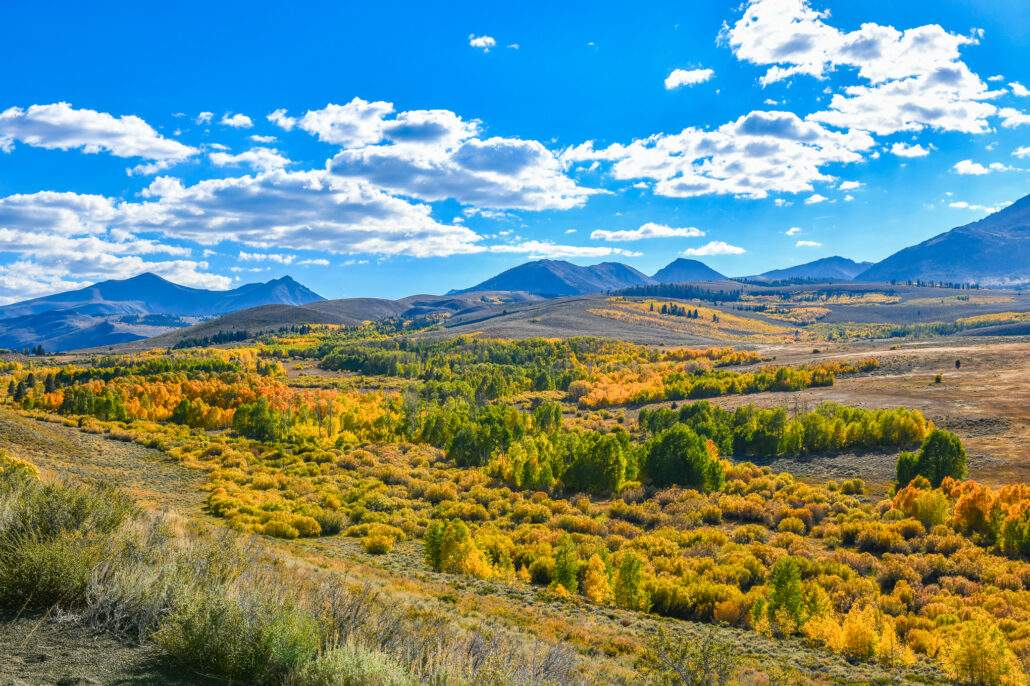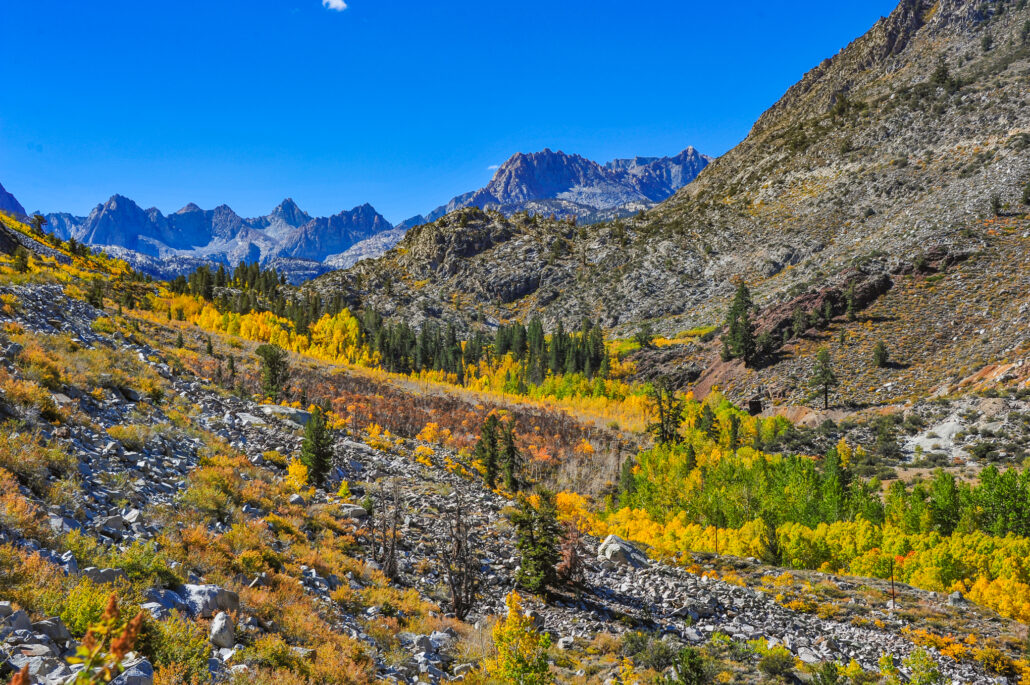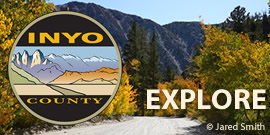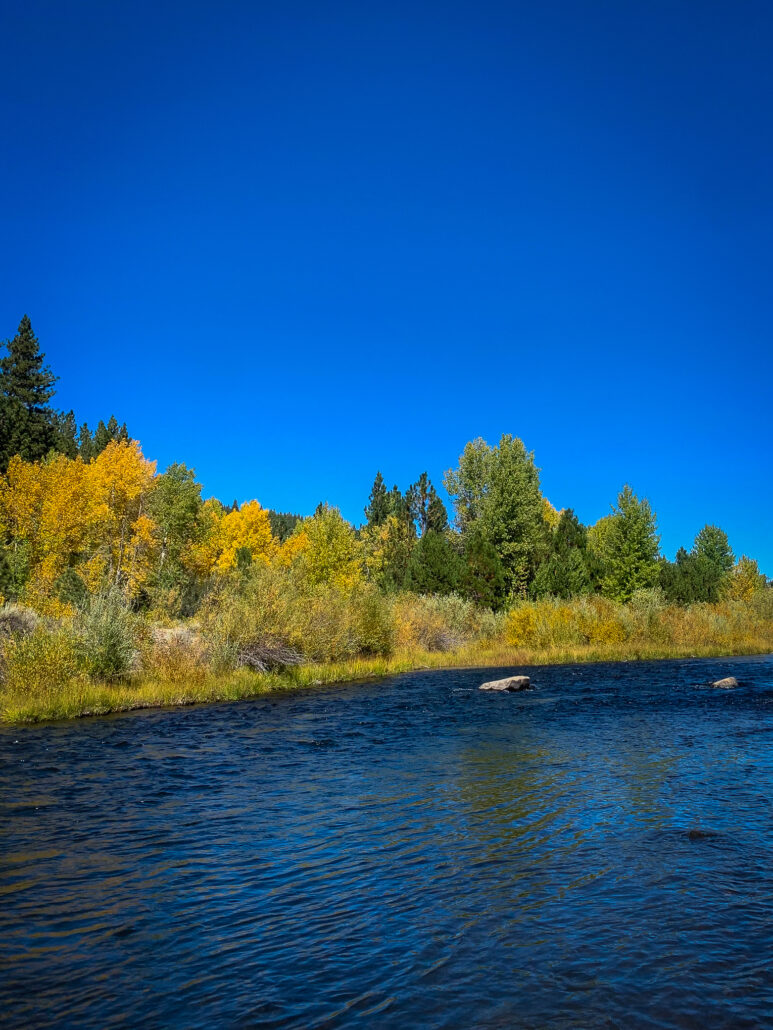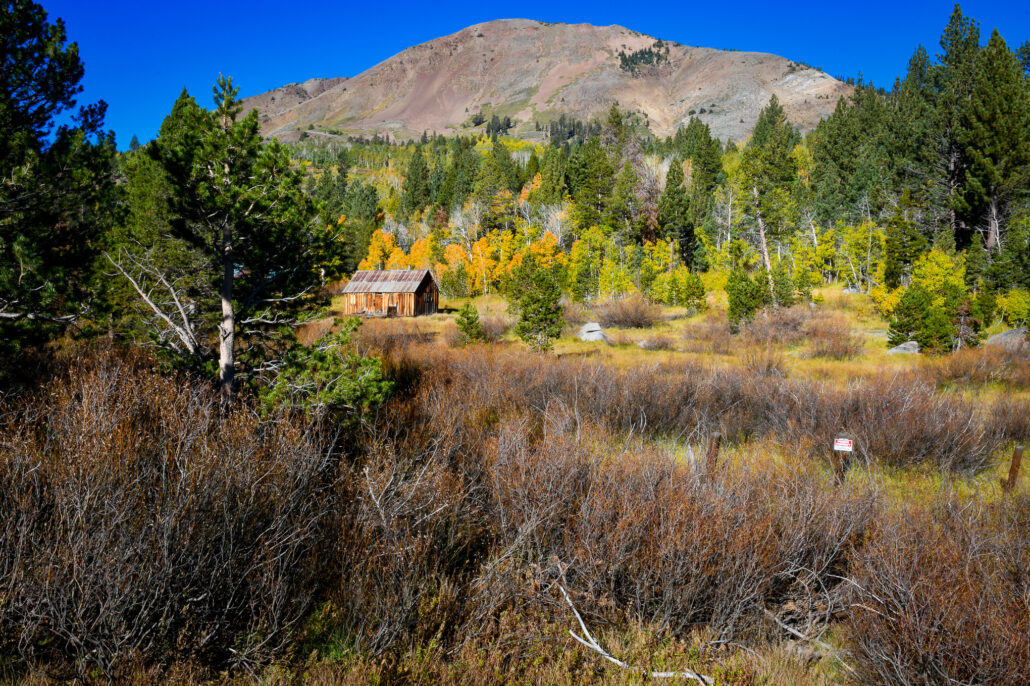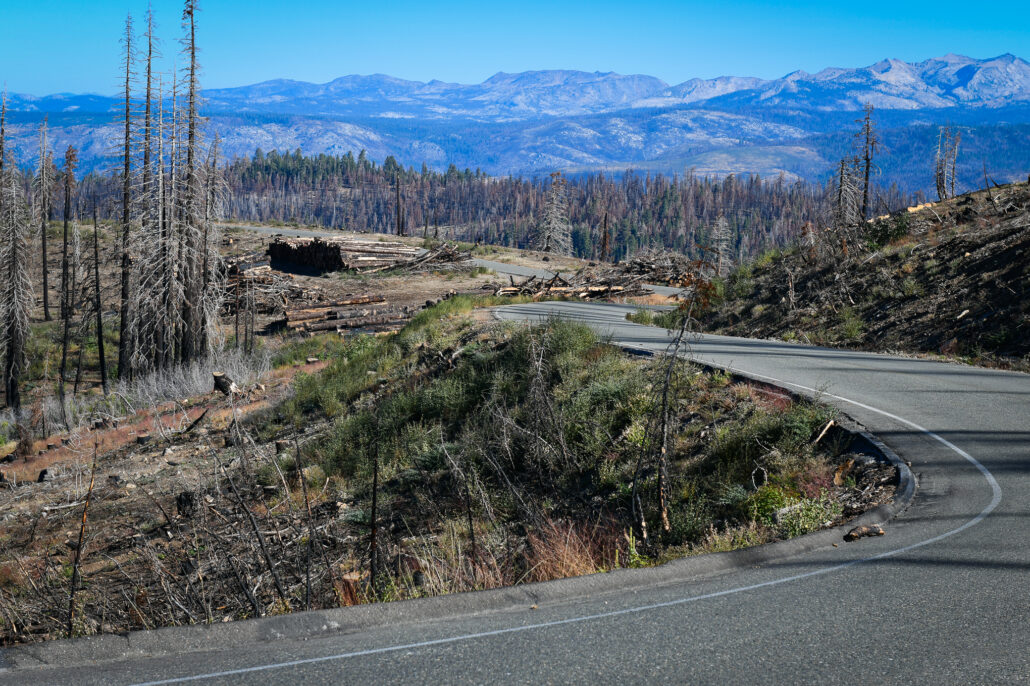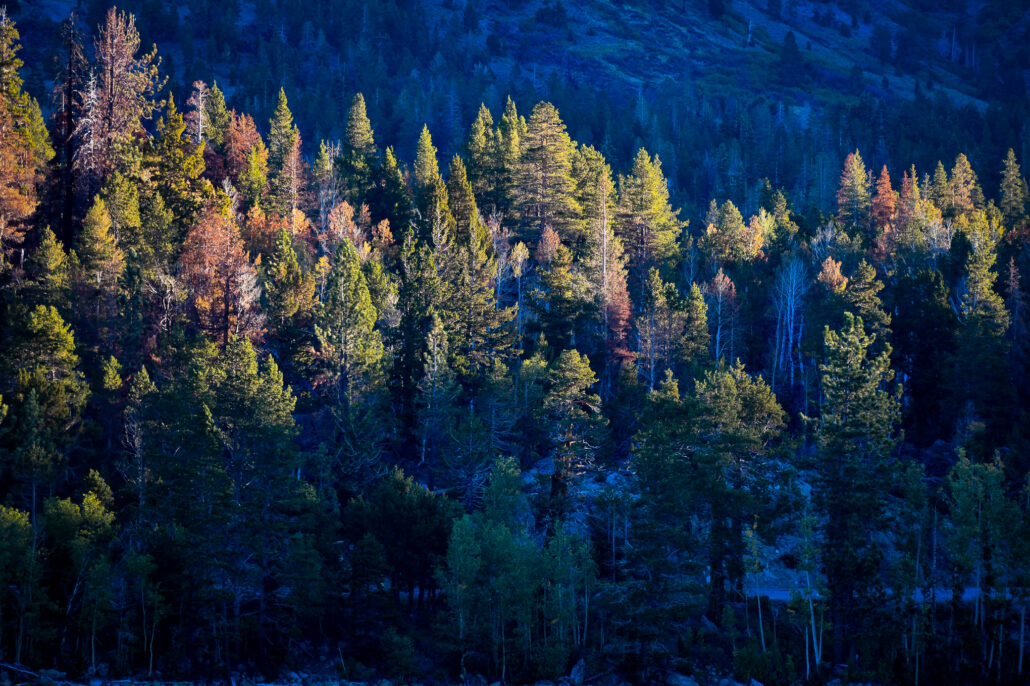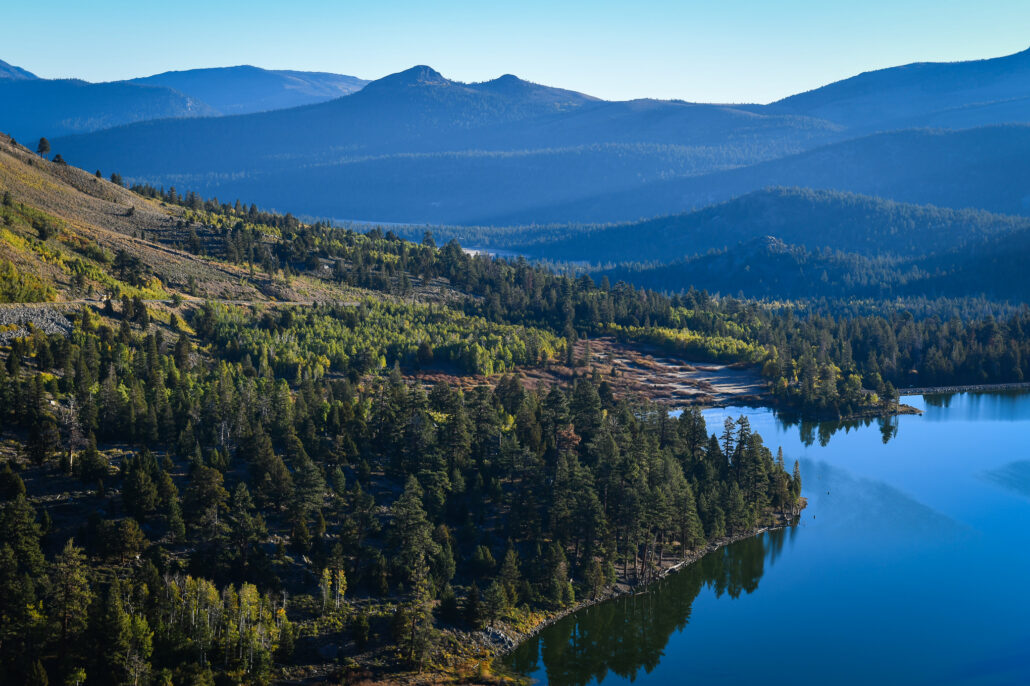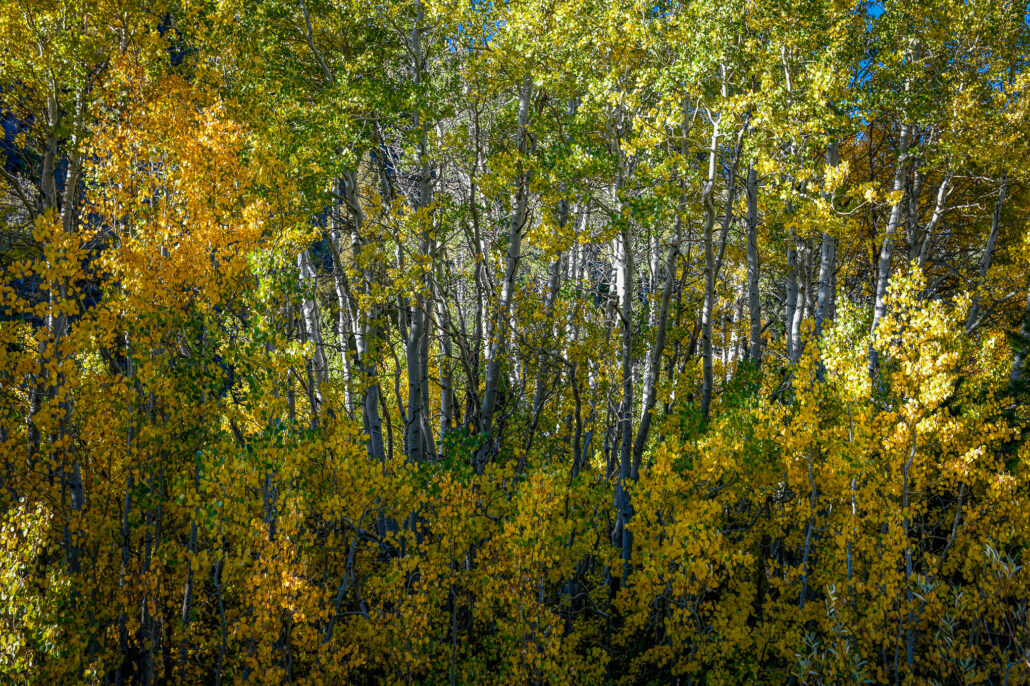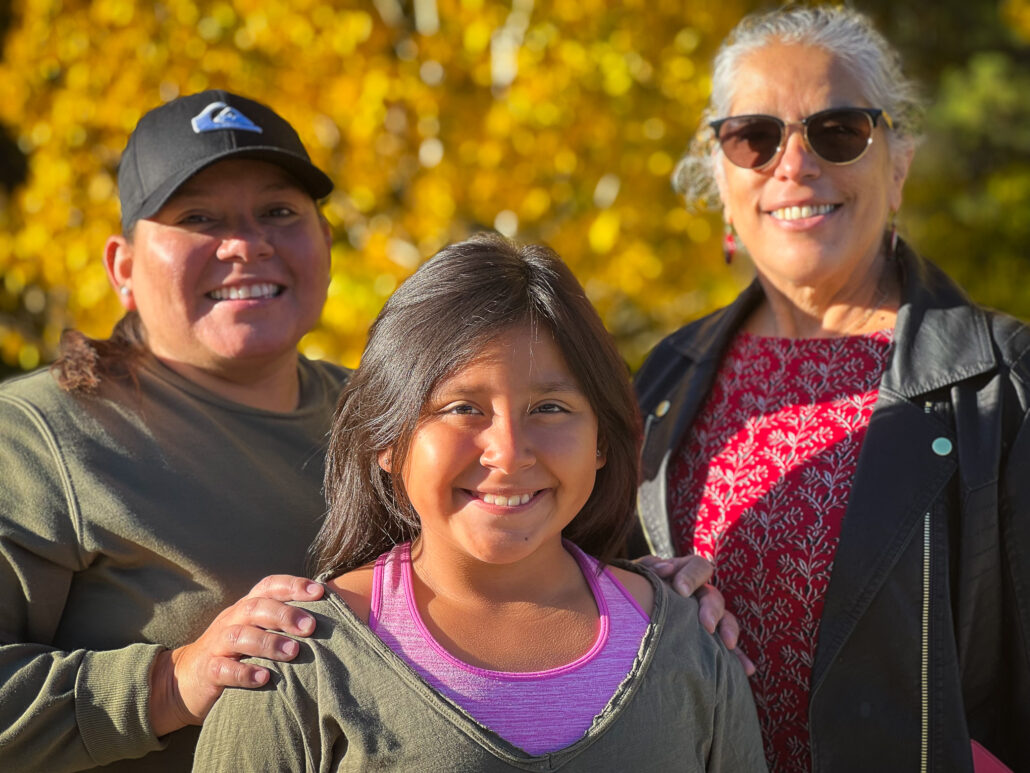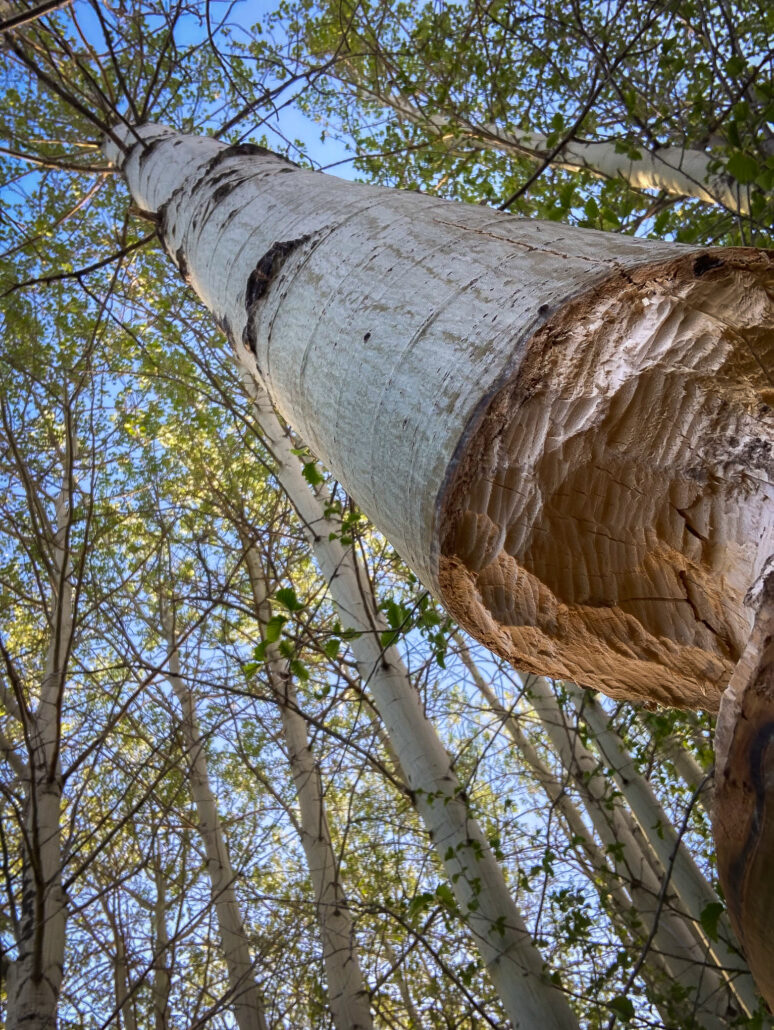On The Road Again
A road trip to Mammoth Lakes to speak to Midwest Travel Writers about California Fall Color allowed time to observe conditions in the Hope Valley, Monitor Pass and the Eastern Sierra from Topaz south to Bishop Creek Canyon.
Being away from the computer always seems to come with risks. The website went offline for a day, reports arrived that could not be reviewed and posted promptly, and then there was the time spent working with the writers. Enjoyable, for sure, but not entirely attentive to this blog.
Apologies to those who were alarmed on Thursday when the site crashed momentarily. The down time was a lame-brain error on my part that required a day’s recovery for DNS repropagation.
The above scene hints at the luster and brilliance of Conway Summit, presently. The forest is a blend of Past Peak, Peak, Near Peak, Patchy and Just Starting that is gorgeous. Since returning to my desk, color spotters have been reporting the same. Of course, the brightest color is lit from behind, as the light passes through the foliage intensifying vibrance.
I’m hopeful sunset shots will arrive from spotters, as I was tied up each evening due to writers’ conference events, as the skies have been filled with clouds to reflect sunset light. That should continue this week.
At the Mammoth Lakes Basin, it was shirt-sleeved weather for hikers along the Heart Lake Trail, a 2.5 mile out and back climb, where aspen are peaking.
I stopped in Bishop to meet briefly with color spotter Betsy Forsyth at her daughter’s soccer match. We discussed areas to document (Owens Valley, North Lake, Pine Creek Canyon and Round Valley – the black cottonwood in Round Valley are beautifully crowned with a golden halo).
Betsy added that the color is so dazzling that people stop their cars in the middle of the road or get out to take pictures. I doubt readers of this site do that. However, if what you’re seeing is so jaw-dropping that you need to pull over, please do so in an established turnout and don’t walk into the road – it’s unnecessary to get a great shot and – need I say – Oh, so dangerous!
I steered clear of a fellow who leaned into my lane from a kneeling position to get a camera phone shot of my approaching car passing through a corridor of orange. OK, my bad, I have a red car, but nearby there were paved turnouts that had open spaces.
Time permitted taking quick snaps at only a few locations in the South Fork, which was moderately visited. Though all spaces were filled Saturday at South Lake, requiring walking up from Weir Pond. Tip: visit midweek.
Everything in the canyon above 8,700′ is at full Peak (the map has been updated). Surveyor’s Meadow, Table Mountain, the slope above Parchers – all were aglow in orange.
On the drive up the Middle Fork toward Lake Sabrina, the turnouts were empty overlooking the Groves Above Cardinal Village and though the traffic was steady, I hoped to be able to stop at Lake Sabrina to confirm Betsy’s shot of peak color taken on 10/4.
Yes. The slopes surrounding Lake Sabrina were still at peak – gloriously so – but No, I could not stop. From the turnoff to North Lake to the Lake Sabrina parking lot, it was bumper to bumper and I’d run out of time. Tip: visit midweek.
At least my slow crawl through walkers and past parked cars allowed me to confirm that what you seen in these shots of the South Fork is similarly appearing above Sabrina Camp … for now.
As I had to return to El Dorado Hills and was dead on my feet, I turned back without seeing North Lake, knowing that Betsy would be there on Monday. We’ve separately received confirmation that it’s peaking all the way up to North Lake, though trees on the north slope have dropped leaves.
At Monitor Pass, I met Pat McCuen who’d followed this website’s advice and looped through the Eastern Sierra. We both had appreciated the brilliance of color being seen at Conway Summit, and I marveled at the remarkable job which Humboldt-Toiyabe NF and the Sierra Nevada Conservancy have done restoring the aspen forest atop Monitor Pass. It is the healthiest stand of aspen I’ve seen there, in over 15 years.
Similarly encouraging is the new aspen growth that’s emerging from fire scarred slopes in drainages along Monitor Pass. It will be increasingly impressive in coming decades.
My final road trip stop was in the Hope Valley where peak color continues at Wylder’s Resort and all key locations up to Red Lake – west of that, it is not developing.
- Conway Summit (6,781′) – Just Starting to PEAK (0-100%) GO NOW!
- Mammoth Lakes Basin (8,996′) – PEAK (75-100%) GO NOW!
- Bishop Creek Canyon (Above 8,700″) – PEAK (75-100%) GO NOW!
- Bishop Creek Canyon (Below 8,700′) – Patchy (10-50%)
- Monitor Pass (8,314′) – PEAK (75-100%) GO NOW!
- Hope Valley (7,300′) – Near Peak to PEAK (50-75%) GO NOW!





